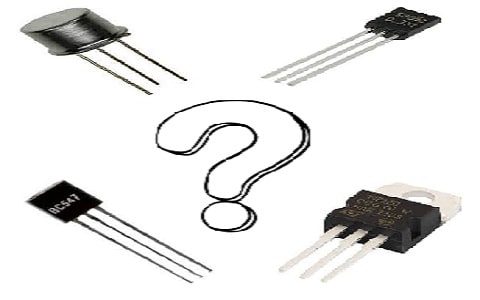Selecting the right transistor is a crucial step in the design and optimization of electronic circuits, determining the success and efficiency of the overall system. The process involves a thoughtful consideration of various factors, ranging from basic electrical specifications to nuanced performance characteristics. Whether you’re working on an amplifier circuit demanding precise gain parameters or a switching application requiring rapid response times, the choice of a transistor is pivotal. This guide outlines a systematic approach for selecting transistors, covering key parameters such as voltage and current ratings, power dissipation, amplification or switching requirements, and considerations for the operating environment. By following these steps and delving into transistor datasheets, designers can make informed decisions, striking a balance between performance, cost, and availability for their specific applications. Here’s a step-by-step guide to help you choose the appropriate transistor or how to select a transistor for a particular application:
How to Select a Transistor?
To select a transistor for suitable application, there are different parameters that need to be considered which are discussed below.

How to Select a Transistor
Determine the Application Requirements:
Start by understanding the specific requirements of your application, including voltage, current, and power ratings. Consider whether the transistor will be used for switching, amplification, or another purpose.
For Example: Consider a circuit that requires switching high currents in a motor control application. The application requirements include a high current rating for the transistor to handle the motor load efficiently.
Identify Transistor Types:
There are two main types of transistors: bipolar junction transistors (BJTs) and field-effect transistors (FETs). Within these categories, there are various subtypes, such as NPN and PNP BJTs or N-channel and P-channel FETs. Select the appropriate transistor type based on the application’s needs.
For Example: For a low-power, portable device like a sensor node in an IoT application, you might choose an N-channel MOSFET (Metal-Oxide-Semiconductor Field-Effect Transistor) for its low power consumption in the off state.
Voltage and Current Ratings:
Check the maximum collector (for BJTs) or drain-source (for FETs) voltage and current ratings of the transistor to ensure they can handle the required values. Make sure to choose a transistor with ratings higher than what your circuit will experience to provide a safety margin.
For Example: If your circuit operates with a maximum voltage of 24 volts, you would choose a transistor with a voltage rating higher than 24 volts to provide a safety margin.
Amplification or Switching:
If your application involves amplification (as in analog circuits), you might consider the current gain (hFE for BJTs) for BJTs and transconductance (gm) for FETs. For switching applications (digital or on/off), you need to assess the switching speed and on-resistance (Rds(on) for FETs).
For Example: In an audio amplifier, the choice of a BJT with a high current gain (hFE) ensures effective signal amplification without significant distortion.
Power Dissipation:
Calculate the power dissipation in the transistor to ensure it can handle the heat generated. Ensure that the selected transistor can safely dissipate the power it will encounter in your circuit.
For Example: A power supply circuit requires a transistor to handle a certain amount of power. Checking the power dissipation specifications ensures that the selected transistor can handle the heat generated during operation.
Gain and Voltage Ratings:
In amplifier applications, consider the transistor’s gain characteristics, frequency response, and noise performance.
For Example: In a high-frequency RF amplifier, you would consider the transconductance (gm) of an FET, as well as its frequency response, to ensure the amplifier meets the application’s needs.
Operating Environment:
Consider the operating temperature range and other environmental factors, such as humidity, that may affect the transistor’s performance.
For Example: In an automotive application where the temperature can vary widely, selecting a transistor with a wide operating temperature range ensures reliable performance under different environmental conditions.
Package Type:
Transistors come in various package types, such as TO-92, TO-220, SOT-23, etc. Choose a package that suits your PCB layout and thermal requirements.
For Example: In a space-constrained PCB layout, choosing a small surface-mount package like SOT-23 might be preferable over larger packages like TO-220.
Cost:
Consider the cost of the transistor, as well as its availability. High-performance transistors or specialized components may be more expensive and harder to source.
For Example: For a consumer electronics product with cost constraints, selecting a transistor that meets the performance requirements at a lower cost becomes a priority.
Supplier and Availability:
Ensure that the chosen transistor is readily available from reputable suppliers. It’s important to select a component that you can easily source when needed.
Application-Specific Considerations:
Some applications may have unique requirements, such as low noise, high-speed switching, or specific voltage tolerances. Make sure to account for these factors in your selection.
For Example: In a high-frequency communication system, minimizing noise is critical. Therefore, selecting a transistor with low noise characteristics becomes a key consideration.
Consult Datasheets:
Always consult the manufacturer’s datasheet for detailed information on the transistor’s specifications, electrical characteristics, and application notes.
Please refer to this link for How to Choose Base Resistance for Transistors & Power Transistor.
Transistor selection can be complex, and it often involves a trade-off between various parameters. It’s essential to have a good understanding of your circuit’s requirements and the transistor’s datasheet to make an informed choice. After selecting a transistor sometimes it needs to be replaced. Check on replacement of transistors with equivalents to know on the points that need to be considered before replacing. The transistor can also be interfaced with a microcontroller read on how to interface a transistor with a microcontroller to know about it and before interface few points need to considered. Check on Precaution to be taken before interfacing a transistor with microcontroller.